UPDATE | 2022年10月13日
日本は災害大国と言われます。近年起きた大きな自然災害を振り返るとともに、日本で発生する自然災害にはどのようなものがあるのか、種類ごとにその詳細と対策を知り、もしものときに備えましょう。
INDEX
日本は外国に比べると、台風、大雨、地震、火山噴火などの自然災害が発生しやすく、その被害も大きな国です。
全世界のなかで日本の国土の面積が占める割合は0.28%しかないのですが、全世界で発生したマグニチュード6以上の地震の20.5%が日本で起こっており(2000~2009年の合計)、全世界の活火山(過去およそ1万年以内に噴火した火山等)の7%が日本にあります。また、被害については、全世界の災害で亡くなった方の0.3%、全世界の災害で受けた被害金額の11.9%(1979~2008年の合計)が日本となっています。
(参考:国土技術研究センター「国土を知る/意外と知らない日本の国土」)
それでは、なぜ日本は自然災害が多いのでしょうか。それには大きく4つの理由があります。
①日本列島は4つのプレート(フィリピン海プレート、太平洋プレート、北アメリカプレート、ユーラシアプレート)によって形成されており、プレート運動による影響で地震活動、火山活動が活発である。
②国土の多くを急峻な山地が占め、河川が短く急流である。
③アジアモンスーン地域に位置しており、梅雨と台風の時期にしばしば集中豪雨が起きる。
④河川や海岸、火山に接して都市や農地がある。
地形、気候、それに由来する土地利用の方法など、さまざまな要因が絡んで、自然災害が発生しやすく、大きな被害を受けやすい状況にあることがわかります。この日本に住んでいる限り、自然災害は避けることができないのです。
[PR]
日本で起きる自然災害の種類は、「地震・津波・火山噴火・台風(大雨)・土砂災害(地すべり、土石流、がけ崩れ)・竜巻・雪害」などがあげられます。
それぞれの災害の発生件数と被害額を見てみると、発生件数は「台風」が57.1%で最も多く、その後は「地震」17.9%、「洪水」14.7%と続きます。
一方、被害額については、一度発生すると広範囲に甚大な被害をもたらす「地震」が8割以上を占め、次いで「台風」「洪水」となっています。(1985~2018年に発生した自然災害についての集計)
(出典:中小企業庁「我が国における自然災害の発生件数及び被害額の災害別割合」)
ここからはそれぞれの災害について、詳細と対策を解説していきますが、その前にまず、どの災害にも共通するものとして知っておきたい4つの対策を紹介します。
災害に備えるために、まず自分の住んでいるところや職場で、どのような災害が発生する危険があるのかを知ることからはじめましょう。
国土交通省が運営する「ハザードマップポータルサイト」では住所を入力すると、それぞれの自治体が出している災害リスク情報をまとめて調べることができます。確認できるのは「洪水」「土砂災害」「高潮」「津波」「道路防災情報」「地形分類」の6つの情報です。
地震や津波、台風など、自然災害が起きたときにアラートで知らせてくれるアプリがいろいろ出ています。位置情報から周辺地域で出ている避難勧告や警報をプッシュ通知してくれるものもあり、身の安全を守るのに役立ちます。
自分にとって使いやすいものを見つけて、インストールしておくとよいでしょう。
防災アプリを選ぶときには、下記の3つのポイントをチェックしてくださいね。
①情報の信頼性が高いか。
②自分の欲しい情報を得られるか。(自然災害発生時にアラートがくるだけのシンプルなものから、避難所までナビゲートしてくれる、家族など大切な人の安否を確認できるなどさまざまな機能があるものもあります)
③直感的に操作できるか。
インストールしただけで満足せず、使い方をひととおり確認するとともに、ときどき復習をかねて使うようにしてください。その積み重ねが、いざというときに身を守ることにつながっていきます。
地震、噴火などの災害が発生すると、被災地への通信が増加し、電話がつながりにくい、つながらない状況になることがあります。そのような場合に提供が開始される声の伝言板です。
まず「171」にダイアルし、ガイダンスに従って、声の録音・再生を行ってください。被災地にいる人は自分の電話番号、もしくは連絡を取りたい方の電話番号、被災地以外の人は連絡を取りたい方の電話番号が必要です(携帯電話でもOK)。
家族に自分の安否や居場所を伝えたいときに使えますので、災害発生後、電話がつながらない場合は災害用伝言ダイアルにメッセージを残すよう、お互いに確認しておくとよいと思います。
日本は自然災害の多い国ですので、いつ何時、自分が災害に直面してもおかしくありません。自宅を離れ避難することになった場合に備えて、水や食料、貴重品、避難生活に必要なグッズなどをまとめた袋を用意しておきましょう。
自宅を離れて過ごす数日間、袋に入っているものを使って生活できるかどうか?という視点で、必要なものを用意してください。
では、ここからは「地震・津波・火山噴火・台風(大雨)・土砂災害(地すべり、土石流、がけ崩れ)・竜巻・雪害」など、各災害の内容と実際にこれらの災害が起きた場合、どのような行動を取れば良いのか?についてお伝えしていきます。

地震は地下にある岩盤(プレート)が周りから押される、もしくは引っ張られることで急激にずれることで発生します。ずれ動いた振動が地上にも伝わり、揺れにつながるのです。先ほど説明したように、日本には4つのプレートがありますので、それだけ地震が多く発生しやすいわけです。
地震が起きると以下のような被害が予測されます。
・ビルや家屋が崩れて人が生き埋めになったり、外壁や窓ガラスが割れて落下し、けがをする。
・通話の集中や通信設備の被災などにより、電話やインターネットができなくなったり、つながりにくくなる。
・歩行者や自動車が集中することで道が大渋滞し、避難が困難になる。建物の倒壊や土砂崩れなどによって、道路が通れなくなる。
・線路が寸断されたり、線路が無事でも安全確認に時間がかかるなどの理由で、相当な時間、電車が動かなくなる。
・電気・ガス・水道が使えなくなり、復旧まで時間がかかる。
地震が発生したときに備えて、事前に対策しておくことが大切です。ここではやっておきたい10の備えをお伝えします。
(1)家具などの転倒・落下・移動防止対策をする。
(2)ケガの防止対策をする。
(3)家屋や柵の強度を確認する。
(4)消火の備えをする。
(5)火災の早期発見のための対策と火災防止対策をする。
(6)非常用品(水・食料を含む)を備える。
(7)「もしも」のときにどうするか、家族と話し合っておく。
(8)地域の危険性を確認する。
(9)防災知識を身に付ける。
(10)防災行動力を高める。
詳細は東京消防庁「地震に対する10の備え」を参考にしてください。
実際に地震の揺れを感じたり、緊急地震速報が来た場合は、どのような行動をとればよいのでしょうか。
どこにいるかによって対策は異なりますが、まずはあわてず、自分の身の安全を確保してください。そして揺れがおさまったら、テレビ、ラジオ、インターネットなど、さまざまな手段で正確な情報を集めて現状の把握につとめ、その後にとるべき行動を考えましょう。むやみに移動せず、安全な場所にとどまるのが基本です。
【自宅にいた場合】
・あわてて外に飛び出さない。
・扉を開けて避難路を確保する。(ドアや窓がゆがんで開けられなくなる可能性がある)
・頭を保護しながら大きな家具から離れ、丈夫な机の下などに隠れる。
・料理や暖房などで火を使っていた場合、その場で火を消せるときは火の始末をする。火元から離れているときは無理に火を消しに行かない。
【人が大勢いる施設(大規模店舗などの集客施設)にいた場合】
・あわてて出口や階段に向かわない。
・施設の係員や従業員の指示に従う。
・とくに指示がない場合は、頭を守り、揺れに備えて安全な姿勢をとる。
・落下しそうなもの(つり下がっている照明など)、倒れてきそうなものから離れる。
ここまで地震について見てきましたが、日本ではどのくらいのスパン・規模で地震が起きているのでしょうか。ここ5年で発生した大きな被害を伴う地震をまとめました。
| 発生年 | 発生した地域と震度 | 主な被害 |
|---|---|---|
| 2022年 | 宮城県、福島県で最大震度6強 | 死者3人 住家全壊 204棟 住家半壊 4,085棟 住家一部破損 45,335棟 |
| 2021年 | 福島県、宮城県で最大震度6強 | 死者1人 住家全壊 69棟 住家半壊 729棟 住家一部破損 19,758棟など |
| 2018年 | 北海道胆振東部地震 北海道厚真町で最大震度7 |
死者43人 住家全壊 469棟 住家半壊 1,660棟 住家一部破損 13,849棟など |
| 2018年 | 大阪府大阪市北区、高槻市、枚方市、茨木市、箕面市で最大震度6弱 | 死者6人 住家全壊 21棟 住家半壊 483棟 住家一部破損 61,266棟など |
日本ではほぼ毎年、死者や住宅損壊の被害を伴う大きな地震がどこかで起きていることがわかります。
日本の災害被害額の8割を占めているのが地震です。一度発生すると大きな被害が出る災害ですので、「もしも」に備えてしっかりと準備をしておきましょう。

津波とは港に押し寄せる大きな波のことで、海底で発生する地震や海底火山の噴火などにより海水が大きく動かされることで発生します。
日本では地震が発生しやすく、かつ周りを海に囲まれているため、津波の被害も受けやすいので、地震と同じく事前の備えが大切です。
津波はさまざまな要素が複雑に絡み合って発生するため、すべてを正確に予測することはできませんが、過去の津波では以下のような被害が出ています。
・街全体が津波に飲み込まれ、家や建物が流され、バスや電車、大型船が海側から打ち上げられた。
・20m以上の高台に避難していたが、背後から回り込んできた波に流された。
・津波が地形をかけあがり、当初予想されていた以上の高さになって押し寄せてきた。
津波が発生したときに備えて、事前に対策しておくことが大切です。ここではやっておきたい津波についての備えをお伝えします。
(1)ハザードマップを確認しておく。
海の近くにお住まいの方は、ハザードマップで津波の危険がある場所、最寄りの津波避難場所や津波避難ビル、高台などを確認しておきましょう。また、避難場所とともに避難経路も確認しましょう。
(2)「津波標識」を確認する。
津波の危険がある場所には、「津波注意」のほか、「津波避難場所」や「津波避難ビル」を示す標識が設置されています。もしものときに備え、海の近くにいるときは必ず確認するようにしてください。
(3)津波について知る。
正しい避難行動がとれるように、津波の特徴を知っておきましょう。
・津波は急激に高くなる
・見てから逃げるのでは間に合わない
・津波は繰り返し襲ってきて、後から来る津波の方が高くなることもある
・高さが50cmほどでも立っていられず流されてしまうほど、津波の力は大きい
実際に津波の危険がある場所で揺れを感じたり、津波警報を見聞きした場合は、どのような行動をとればよいのでしょうか。
まずはすみやかに海岸から離れ、可能な限り高い場所に避難するのが基本となります。渋滞に巻き込まれる可能性がありますので、原則、徒歩で避難しましょう。
海水浴や釣りなどで海中や海岸付近にいる場合は、「津波注意報」でも避難が必要です。すぐに海からあがって避難を開始し、津波避難場所、津波避難ビル、近くの高台などに向かってください。
津波は一度だけでなく、何度も繰り返し襲ってきます。いったん波が引いても決して家に戻ったりせず、津波警報・津波注意報が完全に解除されるまでは避難を続けてください。
また、津波到着予定時刻になっても津波がこなかった場合も同様です。遅れてやってくることもありますので、警報・注意報が出ている間は絶対に戻らないでください。
避難先では、テレビやラジオ、インターネット、防災行政無線などを通じて正しい情報を入手するよう心がけましょう。
津波への対策は気象庁公式サイト「津波から身を守るために」もぜひ参照してください。
「ここまで津波について見てきましたが、日本ではどのくらいのスパン・規模で津波が起きているのでしょうか。ここ40年で発生した大きな被害を伴う津波をまとめました。
| 発生年 | 発生した地域と津波の状況 | 主な被害 |
|---|---|---|
| 2011年 | 東北地方太平洋沖地震(東日本大震災)に伴って発生 岩手県大船渡市の綾里湾で遡上高(陸に上がった津波が到達した標高)40.1m、観測できた津波の高さでも9.3m以上(福島県相馬港)と、国内観測史上最大の津波 |
死者15,894人 行方不明者 2,561人 負傷者 6,152人 町がまるごと流されるなど、東北地方と関東地方の太平洋沿岸部に壊滅的な被害を与え、原子力発電所への被害も含めて、歴史に残る大災害となった |
| 1993年 | 北海道南西沖地震に伴って発生 奥尻島で最大波高16.8m、遡上高が30mに達し、地震発生後4~5分で大津波警報が出されたが間に合わず、奥尻町青苗地区が壊滅 |
死者・行方不明者198人 対岸のロシアでも行方不明者3人 |
| 1983年 | 日本海中部地震に伴って発生 秋田県・青森県・山形県の日本海側で10 mを超える津波 |
死者100人 対岸の韓国でも死者1人、行方不明者2人 |
地震の多い日本では津波もまた避けることができない災害です。すみやかに避難できるよう、ハザードマップを確認し、もしものときに備えましょう。
現在、日本には111の活火山(過去1万年以内に噴火した火山及び現在活発な噴気活動のある火山)があり、世界でも有数の火山大国です。火山が噴火すると、噴石(大小さまざま)、火砕流、融雪性火山泥流(溶岩や火砕流の熱で雪や氷がとけ、火山噴出物と水が混ざって地表を流れる現象)、溶岩流、火山灰、火山ガスなどが発生して被害をもたらします。
とくに大きな噴石、火砕流、融雪性火山泥流は、噴火から避難するまでの時間的猶予がほとんどないので、警報が出たらすばやく避難することが重要です。
噴火による被害には具体的に下記のようなものがあります。
・噴石
噴火の勢いで火口から吹き飛ばされる岩石で、ものすごい勢いで飛んでくるため、小さなものであっても非常に危険。
・火砕流
噴火により放出された破片上の固体物質や火山ガスなどが混ざった状態で地表を流れる。その速度は時速100km以上、温度は1000℃に達することもあり、大きな破壊をもたらし、人が巻き込まれた場合は即死してしまう。
・溶岩流
火山から噴出したマグマが地表を流れ下る。温度は1000℃前後と高温で、地表を覆い、草木を焼き尽くしてしまう。
・火山灰・火山ガス
目や鼻、のど、気管支など人に健康被害をもたらすほか、灰は道路、田畑、家屋などに降り積もり、農作物を枯らしたり、信号機などの機械を壊してしまうことがある。
火山噴火が発生したときに備えて、事前に対策しておくことが大切です。ここではやっておきたい火山噴火についての備えをお伝えします。
(1)噴火警戒レベルととるべき行動を知る。
噴火警戒レベルとは、火山の活動状況に対応して「警戒が必要な範囲」と防災機関や住民などが「とるべき防災対応」を5段階で設定したものです。
噴火予報
レベル1 活火山であることに注意
噴火警報(火口周辺)
レベル2 火口周辺規制
レベル3 入山規制
特別警報(居住地域)
レベル4 高齢者等避難
レベル5 避難
活火山の近くにお住まいの方、また旅行や登山で活火山の近くに行く予定のある方は、ハザードマップで危険な場所を事前に確認しておきましょう。
(2)避難場所や避難経路を確認しておく。
いざというときに、慌てず速やかに避難できるよう、避難場所や避難経路をあらかじめ確認しておきましょう。
(3)噴火速報について知っておく。
周辺住民や登山者などに向けて、噴火が発生したことをいち早く伝え、身を守る行動をとってもらうために発表されるものです。噴火の規模によっては、噴火警戒レベルが引き上げられたり、警戒が必要な範囲が広がったりする可能性もありますので周囲してください。
どれだけスムーズに避難できるかが、被害の有無を大きく左右します。お住まいの市町村で、噴火の恐れがあることを理由に事前避難の指示があった場合は、すみやかに従ってください。
また、噴火速報が流れたときも同様です。すぐに避難を開始し、あらかじめ確認しておいた避難場所に向かいましょう。
噴火時、やっかいなのが火山灰です。自分の身を守るために、気を付けたいことをまとめました。
・防塵マスクをするなど、吸い込まないようにする。
・目に入ったときは水で洗い流す。コンタクトレンズではなく、メガネにするのをおすすめ。
・炎症を起こすことがあるので、皮膚にふれないようにする。
ここまで火山噴火について見てきましたが、日本ではどのくらいのスパン・規模で火山噴火が起きているのでしょうか。ここ10年で発生した大きな被害を伴う火山噴火をまとめました。
| 発生年 | 発生した地域 | 主な被害 |
|---|---|---|
| 2015年 | 口永良部島 | 全島民が避難 |
| 2014年 | 御嶽山 水蒸気爆発による噴火 |
山頂付近の登山者が被災し、死者・行方不明者63人 日本の戦後最悪の火山災害 |
| 2013年 | 桜島 | 噴煙が上空5,000mに達した |
2014年の御嶽山の噴火は、ちょうど登山に訪れていた人が巻き込まれ、戦後最悪の火山噴火による災害となってしまいました。箱根や阿蘇、桜島など、観光地になっている火山も少なくありませんが、出かける際は事前にハザードマップを確認し、現地にいるときも万が一のことを考えながら行動するようにしてください。
大陸と大洋に挟まれた日本では、季節の変わり目に梅雨前線や秋雨前線が停滞し、しばしば大雨を降らします。また、近年では、短期間でごく狭い範囲に非常に激しく降る雨も増えています。次々と発生した積乱雲が列をなし、同じ場所を通過したり停滞したりすることで、線状に伸びた地域に大量の雨を降らせる「線状降水帯」についても、よく聞かれるようになりました。
さらに、7月から10月にかけては台風が接近・上陸しやすくなっています。台風とは、熱帯の海上で発生した低気圧(熱帯低気圧)のうち、北西太平洋または東シナ海にあって、最大風速(10分間平均)が17m/s以上に発達したものをいいます。1年間で約25個発生し、そのうち約12個が日本に接近、約3個が上陸しているのです。
熱帯の湿った空気をたっぷり含んだ積乱雲が集まっているため、台風が近づくと、大雨や暴風になり、洪水・高波・高潮などが発生して被害をもたらすことがあります。
台風や大雨がもたらす被害にはさまざまなものがあります。
山の近くでは、大量に降った雨で地面がゆるむことで土石流やがけ崩れ、地すべりなどが発生し、家や道路が壊れたり、人や家が流れてきた土砂に巻き込まれてしまうなどの危険があります。
短期間で大量の雨が降り、その水が一気に流れ込むことで河川が溢れ、しばしば洪水の被害が発生しています。
海沿いでは強い風により高波となることがあるので、波にさらわれないよう海上や海岸付近には近づかないでください。また高潮が発生し、陸地に海水が流れ込んできて浸水被害が出ることがあります。
強い風でいろんなものが倒れたり、吹き飛ばされたりするのにも注意が必要です。
台風が接近していることがわかったら、雨風が強くなる前に台風に備えて下記のことをやっておきましょう。
(1)窓ガラス、雨戸や網戸を補強する
窓ガラスが割れないように養生テープを貼って補強したり、窓や雨戸、網戸など、隙間から雨風が入ってこないか、たてつけを確認したうえでしっかりと鍵をかけます。また、側溝や排水溝などはつまって水があふれることがないようゴミを取り除きます。
(2)風に飛ばされそうなものは屋内にしまうか、固定する
植木鉢など、庭やベランダなどの屋外に置いてあるもので、風に飛ばされる可能性のあるものはすべて屋内にしまいます。中には入れられないけれど、強風で飛ばされそうなものは、ひもでしばって固定するなど、なにかしら対策をとってください。
(3)家電や家財の避難
家が浸水する危険があるときは、家電や家財をできるだけ高いところにあげておきましょう。漏電・感電防止のため、家電のプラグはコンセントから抜いておきます。
(4)ライフラインを確保する
停電した場合の対策として、携帯電話やパソコン、バッテリーを充電し、懐中電灯やろうそくなどの明かりを用意しておきます。
また、水や食糧を数日分確保し、車を持っている方はガソリンを満タンにしておくとよいでしょう。
台風が接近してきたら、不要な外出は控えてください。もしも外出している場合は、自宅に帰れなくなる前に早く帰宅しましょう。
気象庁が発表する台風情報や警報を定期的にチェックして、常に最新の情報を把握するようにします。雨風が強くなると公共交通機関がストップしてしまうこともあります。また、悪天候のなか移動するのは大変ですので、避難が必要だと感じたらすみやかに行動にうつしてください。
もし避難することになった場合は、
・電気のブレーカーを落とす。
・ガスの元栓を閉める。
・窓は鍵をかけてカーテンを閉める。
の3つを忘れずに行い、戸締りをしっかりしてから移動を開始します。
また避難の際の持ち物は必要最低限にして背負うなど、両手が使える状態にしておくと安心です。
台風が通過した後も、河川は増水したままなど危険な状態がしばらく続くので、油断せず気をつけながら周囲の被害状況の確認を行ってください。
ここまで台風(大雨)について見てきましたが、ここ数年で発生した大きな被害を伴う台風(大雨)をまとめました。
| 発生年 | 発生した地域 | 主な被害 |
|---|---|---|
| 2022年 | 秋雨前線の接近と停滞、線状降水帯による東北地方と北陸地方の長期的な豪雨 | 東北地方と北陸地方を中心に長期的・記録的な水害・土砂災害などによる被害が発生 |
| 2021年 | 長野県 中国地方 九州地方北部 |
活発な梅雨前線と線状降水帯による豪雨で、長野県や中国地方、九州地方北部を中心に長期的・記録的な水害・土砂災害などによる被害が発生 |
| 2020年 | 中国地方 四国地方 九州地方 近畿地方 東海地方 東北地方 |
梅雨前線の影響で日本列島の広い範囲で豪雨となり、死者・行方不明者86名を出した |
| 2019年 | 静岡県 関東地方 福島県 |
非常に強い勢力を保ったまま台風19号が上陸、関東地方と福島県を通過し、死者105名、負傷者375名、行方不明者3名、被害総額1兆8,600億円という大きな被害を出した |
日本では台風や大雨による被害が毎年発生しています。もしもに備えて、日頃から準備しておきたいものです。

土砂災害は山やがけが崩れたり、崩れた土砂が雨水や川の水と一緒に流れてくることで、巻き込まれた人が亡くなったり、建物が倒壊するなどの災害のことで、地震、大雨、火山噴火などがきっかけになって発生します。
土砂災害には大きくわけて、3つあります。
・土石流
大雨などが原因で山や谷の土砂が崩れ、水と混ざってどろどろになった状態で一気に流れてくる現象です。速度が速く、破壊力も大きいので、発生した場所や状況次第では大きな被害が出ます。
・地すべり
雨や地下水がしみ込んだ傾斜地が、家や畑なども一緒に地面ごと大きなかたまりのまま、下へすべり落ちていく現象です。比較的ゆるい傾斜地で発生することが多いです。長年かけて少しずつゆっくりと動くこともあれば、地震などをきっかけに突然起きることもあります。
・がけ崩れ
がけに大量の雨がしみ込んだり、地震のゆれなどがきっかけで、急な斜面が突然崩れ落ちる現象です。一気に大量の土砂が上から落ちてくるので、近くにいた場合、避難するのが難しい災害です。
土砂災害から身を守るために、事前に知っておきたい3つのポイントをお伝えします。
(1)住んでいる地域のリスクを確認。
ハザードマップで、お住まいの地域が「土砂災害警戒区域」や「土砂災害危険箇所」になっていないかを確認しましょう。また、とくにこれらの指定がなくても、家の近くに「がけ地」や「小さな沢」がある場合は、土砂災害が発生する危険があります。
該当する地域にお住まいの方は土砂災害が発生するリスクが高いので、日頃から気をつけて過ごしましょう。
(2)土砂災害の前兆現象を知っておく。
土砂災害が起きる前に、前兆が見られることがあります。注意して観察し、何か異変に気付いたらすぐに安全な場所に避難してください。
・豪雨や長雨が続いている。
・川や井戸の水が濁ったり、湧き水が止まる・濁る。
・雨が降り続いているのに、川の水位が減った。
・木が傾いたり、土のにおいがしたりしている。
・斜面(がけ)から物音がする、石が落ちてくる。
・がけや地面に亀裂や段差が生じる、がけや斜面から水が湧き出る。
・地響きがする。
(3)雨量や警戒情報に注意。
雨が降り始めたら、「土砂災害警戒情報」に注意しましょう。警戒レベルが4になったら、速やかに避難を開始してください。
土砂災害は発生する前に安全な場所に避難するのが基本です。お住まいの地域で「土砂災害警戒警報」が発表されたり、土砂災害の前兆が確認されたときが避難のタイミングです。
しかし、悪天候のなか移動するほうがかえって危険、高齢者がいるなど、さまざまな理由で避難場所へ行くことが難しい場合もあると思います。そういったときは「垂直避難」を心がけ、2階があれば2階へ、そしてがけや斜面の反対側にある部屋に避難してください。できるだけがけから遠い位置にいることで、助かる確率が高くなります。
ここまで土砂災害について見てきましたが、ここ数年で発生した大きな被害を伴う土砂災害をまとめました。
| 発生年 | 発生した地域 | 主な被害 |
|---|---|---|
| 2022年 | 新潟県 石川県 青森県 福島県 長野県 |
大雨による被害 土石流等85件、地すべり14件、がけ崩れ103件 |
| 2019年 | 東北地方 甲信越 石川県 三重県 和歌山県 |
台風19号による被害 土石流等407件、地すべり44件、がけ崩れ501件 |
| 2020年 | 中国地方 四国地方 九州地方 近畿地方 東海地方 東北地方 |
梅雨前線の影響で日本列島の広い範囲で豪雨となり、死者・行方不明者86名を出した |
| 2019年 | 九州北部 島根県 山口県 東海地方 甲信越 |
秋雨前線に伴う大雨による被害 土石流等6件、地すべり7件、がけ崩れ158件 |
大雨や台風に伴い、日本では毎年多くの土砂災害が発生しています。リスクの高い地域にお住まいの方はしっかりと準備し、雨が降り続いていたり、台風が接近したときは最新情報に注意しながら過ごしてください。
竜巻は、発達した積乱雲に伴って発生する激しい上昇気流の渦のことです。竜巻の中心部分の風は非常に強く、毎秒100mに達することもあります。また、移動スピードは速い場合には時速100kmにもなります。
強い風で建物が倒れる。車がひっくり返る。さまざまなものが竜巻に巻き上げられて飛んでいく。竜巻に巻き上げられたものが猛スピードで飛んでくるなど、短期間で狭い範囲に集中して、大きな被害をもたらします。
発達した積乱雲が発生しやすい夏は特に発生する傾向が高いですが、日本海側では冬にも多く発生しています。
竜巻は一瞬で家を吹き飛ばしてしまうこともある危険な自然現象です。まずは巻き込まれないことが第一ですので、竜巻を避けるための情報を知っておきましょう。
(1)竜巻が発生する前兆を知っておく。
天気が急変し、積乱雲が近づいているときは、竜巻も発生しやすくなっていますので気をつけてください。
・黒い雲が近づき、空が急に暗くなる。
・稲光が見えたり、雷鳴が聞こえはじめる。
・ひやっとした冷たい風が吹きだす。
・大粒の雨や雹(ひょう)が降り出す。
(2)「竜巻発生情報」と「竜巻発生確度ナウキャスト」を活用する。
竜巻が発生しやすい天気になった時点で、気象庁から「竜巻発生情報」が出されます。
また、「竜巻発生確度ナウキャスト」では、気象ドップラーレーダーなどの情報をもとに、「竜巻が今にも発生する(または発生している)可能性」の程度を推定し、それを「竜巻発生確度」として、10km格子単位で1時間後までの予測結果を公開しています。
竜巻が発生する前兆を感じたり、今、自分のいる場所で竜巻が発生しやすいことがわかったら、ただちに身の安全を確保する行動をとってください。
竜巻が発生する危険があったり、発生した竜巻を見たときは、すぐに身の安全を確保してください。竜巻は遠くに見えても移動スピードが速いので、あっという間に近づいてきます。写真や動画を撮影したりせず、すぐに行動しましょう。
・屋内で避難する場合。
1階か、地下がある場合は地下に移動します。
物が飛んできてけがをする可能性があるため、窓とカーテンを閉めて、窓から離れてください。
家の中心に近く、窓のない部屋(トイレやウォークインクローゼットなど)に行き、頑丈な机や浴槽などの物陰に入って、低い姿勢で頭と首を守りましょう。
・屋外で避難する場合。
頑丈な建物などの陰に入って、身を小さくして低い姿勢をとり、頭と首を守りましょう。
車の中や物置などのプレハブの建物の中は危険なので、避難場所にしないでください。
近くに建物がない場合は、水路などのくぼんだところに身を伏せて、腕で頭と首を守ります。
ここまで竜巻について見てきましたが、ここ数年で発生した大きな被害を伴う竜巻をまとめました。
| 発生年 | 発生した地域 | 主な被害 |
|---|---|---|
| 2021年 | 静岡県 | 牧之原市布引原、勝田から坂部にかけて発生し、各地で20mを越える最大瞬間風速を観測。 10棟以上が全半壊、負傷者3名 |
| 2019年 | 千葉県 | 台風19号による被害 市原市永吉から潤井戸にかけて台風による竜巻が発生 死者1名、負傷者9名、一部の住宅の倒壊 |
| 2018年 | 滋賀県 | 米原市北方地区から井之口地区にかけて発生 負傷者8名 |
| 2018年 | 沖縄県 | 国頭郡伊江村東江上で発生 負傷者2名 |
竜巻は日本各地で発生しています。狭い範囲ではありますが、住宅の損壊や負傷者・死者が出るなど、大きな被害を受けます。
雪害は雪によって生じる災害で、大雪や雪崩、また雪が降ったあと、除雪している最中に起きるさまざまな被害や、路面凍結による事故も入ります。
雪が降る地域ではどこでも発生する可能性がありますが、とくに雪が多く降る日本海側、新潟県、山形県、秋田県などは雪害の多い地域といえます。
気を付けたい雪害
・雪崩
雪崩は山などの斜面に積もった雪や氷が流れ落ちる現象です。雪崩は場合によっては時速100~200kmにもなり、建物や樹木、人が巻き込まれて大きな被害になることもあります。発生してから逃げることは難しいので、雪崩の起きやすい場所には近づかない、前兆を発見したらすぐ避難することが重要です。
・積雪害
道路や線路などが、長く降り続いた雪に埋もれてしまうことです。交通が麻痺してしまい、日常生活に支障が出ます。
・雪圧害
降り積もった雪の重みで、建物や木が損傷することです。雪の質にもよりますが、降り積もった雪はとても重く、上から落ちてきた雪が人や物にあたって事故になることもあるので、雪の降る地域では定期的な雪おろしや雪かきが欠かせません。
・風雪害
吹雪で視界の悪いことが原因となり、事故などが起こることです。吹雪の中を歩く、車を運転すると、方向や距離感がわからなくなることがあり、事故が起きやすくなります。また、ひどい吹雪では視界が真っ白になり何も見えなくなることがあり、大変危険です。
・着雪害
降った雪が付着したことで、電線が切れる、鉄道設備が故障するなどのトラブルが発生することがあります。
大雪が予想される場合は車の運転や出歩くことは控えたいですが、どうしても動かなければいけない場合もあると思います。
そうしたときには、ケガや事故を防ぐために、下記の点を踏まえて行動しましょう。
(1)車を運転する時
・スタッドレスタイヤにチェーンをつけて運転する。
・雪に埋もれて動けなくなってしまったときに備えて、スコップや毛布、防寒具、水や食料などを車に積んでおく。
・危ない状況になったり、疲れたりしたら、道の駅やパーキングエリアに車を止めて休憩する。
・ホワイトアウト(視界が真っ白になって何も見えない状態)で停止するときには、ハザードランプを点灯する。
・車が雪で覆われてしまったときはエンジンを切る。(一酸化炭素中毒になるのを防ぐため)
・急発進、急ブレーキはせず、いつも以上に安全運転を心がける。
(2)雪の中を歩く時
・歩幅は狭く、足の裏全体を地面につけることを意識して歩く。(滑らないように)
・万が一転んだときに手をつけるよう、両手は空けておく。
・屋根から落ちてくる雪を避けるため、屋根真下やその付近は歩かない。
また、雪によるケガや事故の多くは、除雪(雪おろしや雪かき)をしているときに発生しています。
【除雪中に実際にあった事故】
・雪おろし中にバランスを崩すなどして屋根から転落。
・除雪中、屋根から落ちてきた雪に埋もれる。雪が直撃する。
・寒い屋外で長時間、肉体に負担のかかる仕事をしたことが原因となり、心筋梗塞で倒れる。
こうした事故を防ぐためにも、除雪の際は、下記のような点に気をつけてください。
・1人だけで作業せず、家族や近所の人と協力し、必ず2人以上で行う。
・除雪作業中は携帯電話を持っておく。
・必ず命綱やヘルメットを使い、はしごを使うときは固定する。
・落雪による事故やケガを防ぐため、まず屋根の雪おろしを優先して実施する。
・疲れたら休憩し、無理して作業し続けない。
ここまで雪害について見てきましたが、ここ数年で発生した大きな被害を伴う大雪をまとめました。
| 発生年 | 発生した地域 | 主な被害 |
|---|---|---|
| 2020年 | 北日本から西日本の日本海側 | 冬型の気圧配置による大雪で、群馬県みなかみ市藤原では291mの降雪量を記録 関越自動車道では新潟から群馬の道路上で多くの車が立ち往生して約2,100台が巻き込まれた。自衛隊や警察などが食料配布や除雪作業を行い、解消するのに3日かかった また、鉄道の運休や除雪中の事故が発生した |
| 2018年 | 北陸地方 | 台風19号による被害 上空の強い寒気の影響で、日本海側、とくに北陸地方で記録的な大雪となり、福井市147cm、金沢市87cm、富山市75cmを観測 除雪作業中の事故で死者33名、負傷者約300名 |
| 2017年 | 栃木県那須町 | 関東甲信越地方の山地を中心に大雪となっていた日、栃木県那須町の那須温泉ファミリースキー場近くで大規模な雪崩が発生 「春山安全登山講習」を行っていた高校生と教員のグループが巻き込まれ、死者8名、負傷者40名の犠牲が出た |
数年に一度は大雪による被害が発生しています。日頃から大雪のときに気をつけたいことや発生する可能性のある事故について、知識を得ておきましょう。
日本でよく発生する自然災害には次のようなものがあります。
・地震
・津波
・火山噴火
・台風(大雨)
・竜巻
・雪害
日本は世界でも有数の災害大国ですので、いつ、なんどき、自分も巻き込まれるかわかりません。それぞれ、どのような災害なのか、どんな危険があるのか、そして基本的な対策を知っておくようにしてください。
すべての自然災害に共通する備えとして、ハザードマップを確認し家や職場の近くで発生する危険の高い災害を知っておくこと、そして、避難場所や避難経路を確認しておきましょう。また、いざというときに備えて、非常用持ち出し袋や水道・電気・ガスのライフラインが止まっても数日間は過ごすことができる水や食料、道具を用意しておくことも重要です。

アクセス日本留学 編集部。外国人留学生のみなさんが日本の学校を見つけるための資料請求ができるWebサイト「アクセス日本留学」の運営や「外国人留学生のための進学説明会」を開催しています。
[PR]
[PR]